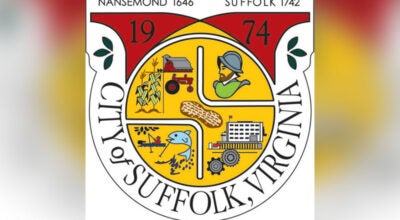Unfolding Suffolk’s future: Final comprehensive plan delivered
Published 9:31 pm Monday, October 16, 2023
|
Getting your Trinity Audio player ready...
|
Suffolk Planning and Community Development, brought their fifth and final comprehensive plan update to Suffolk City Council. Held during the council’s work session on Wednesday, Oct. 4, at City Hall Chambers, the presentation focused on preliminary recommendations for the department’s land use plan. Comprehensive Planning Manager Keith Cannady discussed the approach for the future land use plan and proposed use districts while outlining steps his team will take in the near future.
“The number of districts that we’re proposing is going to increase from about six to 11 in this recommendation. We’re keeping many things the same…and also recommending some additional detail in areas where we think it will really benefit,” Cannady said.
The six use districts for the 2035 plan are mixed-use core, core support, inner-ring suburban, suburban, rural conservation and agriculture. Districts for the 2045 plan would see the addition of commercial, industrial/employment, office/institutional, multifamily, traditional and suburban neighborhoods, rural neighborhoods, conservation and agriculture, and village districts.
On the purpose of the land use plan, Cannady’s presentation noted that it will help serve as a guide for both rezoning/use permits and infrastructure investments. Likewise, it would help preserve Suffolk’s uniqueness, help manage growth and change, promote land use compatibility, and provide predictability for residents and investors.
“Of course, nobody has a crystal ball and can say how exactly that’s going to happen, but we can use the land use plan to help us predict for the benefit of current residents, but also folks who are looking to grow here and be a part of that change that we’re seeing,” Cannady said.
On the approach towards the land use plan, Cannady noted that both existing zoning and land use data use are two important parts of the plan’s goal of “protecting what we already have.” Vacant/developable land & opportunity areas will be used for possible changes and seeing what is developable. Identifying desired future land uses in areas identified for change were also noted in the plan.
During an intermission for council questions, Council Member John Rector of the Suffolk borough asked Cannady if using the use districts would require “an awful lot of rewriting in the UDO (United Development Ordinance)” to provide development guidelines. Cannady said no.
“To answer your question, no,” Cannady replied. “I think we’re anticipating both of those at the same time. I think we’re using our existing zoning district and zoning map to drive a lot of these recommendations to the extent that they don’t line up, they’ll come back to you in the form of recommendations in this document, but I don’t see big changes.”
Vice Mayor Lue Ward asked Cannady if the department had any specific place for “an arena or stadium.”
“We have one of the biggest people here, Amazon. I think it would be a nice stadium, a nice arena. That’s something that they’re spending money everywhere, so it would be a good time to think about it,” Ward said.
“That is something that we could undertake and evaluate the best locations in the city for that,” Cannady replied. “Typically, you’re going to want to go where the infrastructure is, where the transportation links are, where the people are.”
Mayor Michael D. Duman thanked Cannady and his staff for bringing this to the council.
“I think it’s going to provide, especially as we consider conditional use permits, a little bit more guidance as to direction within zoning districts as far as what we’re looking for and also, the applicants will be able to get a better grasp of what may or may not work,” Duman said. “So I think from the council’s standpoint, that additional guidance is going to help immensely when we start making conditional use permit decisions.”
Returning to his presentation, Cannady noted that what they proposed is similar to other Hampton Roads communities, naming Portsmouth, Chesapeake, Norfolk, Newport News, Isle of Wight and Hampton as examples. He expressed that a different direction is being looked at for Suffolk but says this strategy is a “common approach” for land use planning. In the next steps going forward, Cannady says he and his team are “putting pen to paper” to prepare a future land use map for the next city council work session. The map will apply to land use types focused on change in opportunity areas. Likewise, the plans describe specific place types within each area and prepare associated recommendations to support the goals of the land use plan.
“We’re going to focus on the growth areas. That’s where the change is happening, and walk you through that process in more detail and share what that looks like if we were to apply that approach here in Suffolk,” Cannady ended.





